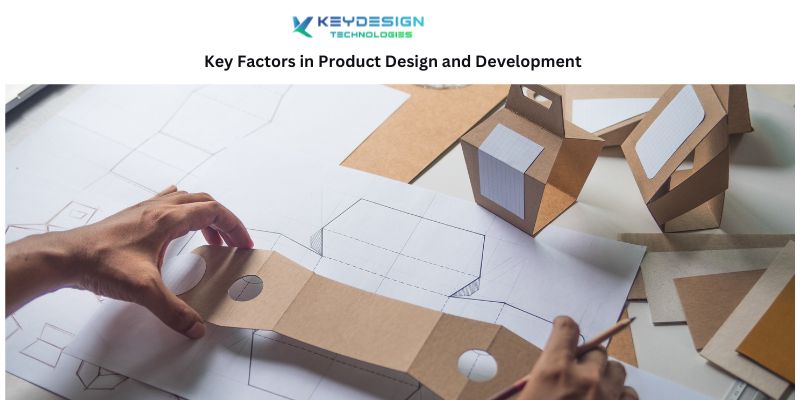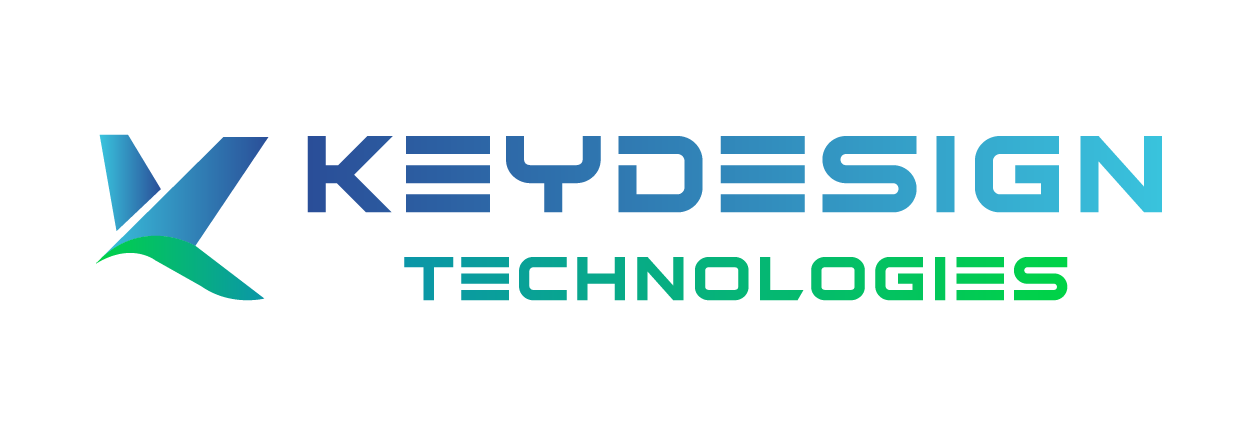
Introduction to Product Design and Development
Definition of Product Design and Development
Product design and development is the process of creating a new product. It encompasses various stages. These stages include idea generation, design, testing, and production. The goal is to transform an initial concept into a tangible item that meets customer needs. This process can involve various disciplines. Designers, engineers, and marketers often work together to ensure success.
Importance of the Process in Business Success
The product design and development process is critical for business success. A well-designed product can differentiate a business in a competitive market. It helps in meeting customer expectations and improving satisfaction. A carefully developed product reduces the risk of failure after launch. Effective product design also leads to cost savings, as it streamlines production and minimizes errors.
Overview of the Stages Involved
The product design and development process can be broken down into several key stages:
- Idea Generation: This is where new ideas are brainstormed.
- Concept Development: Ideas are refined into feasible concepts.
- Design and Prototyping: Development of initial designs and prototypes occurs.
- Testing: Products undergo testing for functionality and market fit.
- Production: Final adjustments are made, and production begins.
- Launch: The product is introduced to the market.
Each stage is essential for ensuring that the product is viable and ready for consumers.
Understanding User Needs
Conducting Market Research to Identify Customer Needs
Understanding user needs begins with thorough market research. This research involves gathering data on consumer behaviors, preferences, and pain points. Effective methods include surveys, interviews, and focus groups. Analyzing competitors also helps identify gaps in the market. By collecting and analyzing this data, product designers can pinpoint what customers truly want. The insights gained shape the direction of product development.
Utilizing User Personas and Journey Mapping
User personas are fictional characters that represent different user types. They help teams visualize various customer segments. Journey mapping takes this a step further. It outlines the customer experience from start to finish. By mapping out each interaction, teams can identify critical touchpoints. These touchpoints highlight areas for improvement and innovation. Both tools keep the focus on user needs throughout the design process.
Incorporating Feedback Loops Throughout Development
Feedback loops are vital in refining any product. They involve gathering user insights at multiple stages of development. Prototypes or beta versions should be tested by real users. Their input allows teams to make necessary adjustments. Regular check-ins ensure the product aligns with user expectations. This iterative process enhances product quality and user satisfaction. Incorporating feedback keeps the development agile and responsive to changing needs.
Prototyping and Iteration
The Role of Prototyping in Product Development
Prototyping plays a crucial role in product development. It allows designers and developers to visualize their ideas. This process helps in identifying potential issues early. Prototypes can be used to gather feedback from users. This feedback is essential in refining the product.
Methods of Creating Prototypes
There are two main types of prototypes: low-fidelity and high-fidelity.
- Low-fidelity prototypes are simple and often made from paper or sketches.
- High-fidelity prototypes are more detailed and resemble the final product. They include interactive elements and realistic design. Each method serves a specific purpose. Low-fidelity prototypes enable quick iterations. High-fidelity prototypes test usability and design concepts.
Iterative Design Process and Its Benefits
The iterative design process emphasizes ongoing improvements. Each iteration is based on user feedback and testing results. This approach leads to better products. Key benefits include:
- Enhanced user satisfaction due to better design adjustments.
- Reduced development costs by addressing issues early.
- Faster time to market as teams refine ideas efficiently. By embracing prototyping and iteration, teams can create successful products.
Collaboration Across Disciplines
Importance of Cross-Functional Teams
Cross-functional teams play a vital role in product design and development. These teams usually include members from design, engineering, and marketing. Each discipline brings unique perspectives and skills. Designers focus on user experience. Engineers ensure technical feasibility. Marketers understand market trends and customer needs. This collaboration enhances creativity and innovation. When team members work together, they create products that meet user expectations and business goals.
Effective Communication Strategies
Effective communication is crucial in cross-functional teams. Regular meetings foster discussions and feedback. Utilizing digital collaboration tools can help keep everyone on the same page. Tools like Slack or Asana allow for real-time updates and task management. It’s important to establish clear roles and responsibilities. This clarity minimizes confusion and enhances accountability. Encouraging an open environment where questions and ideas are welcomed can lead to better outcomes.
Case Studies of Successful Collaboration
Some companies exemplify successful collaboration in product development. For instance, Apple’s approach integrates design and engineering from the start. Their teams work closely to ensure products are innovative and functional. Similarly, Procter & Gamble employs cross-functional teams during product launches. They combine insights from various departments to avoid pitfalls and seize opportunities. These case studies highlight the effectiveness of collaboration in delivering successful products.
Testing and Quality Assurance
Methods for Testing Product Functionality and User Experience
Testing and quality assurance are critical stages in product design and development. Various methods assess product functionality and user experience. These methods include:
- Unit Testing: Evaluates specific components to ensure they work correctly.
- Integration Testing: Checks if different parts of the product function together.
- User Testing: Involves real users who provide feedback based on their interactions with the product.
- A/B Testing: Compares two versions of a product to determine which performs better.
Each method targets specific aspects of the product. They ensure that the product meets functional requirements and user needs.
Importance of Quality Assurance in Product Lifecycle
Quality assurance is vital throughout the product lifecycle. It ensures that the product remains reliable and meets customer expectations. Quality assurance identifies issues before they reach the market. This process can save time and resources by catching defects early. Moreover, it helps maintain brand reputation. A product with high quality fosters customer trust and loyalty, which is essential for business success.
How to Implement Feedback from Testing into Final Design
Integrating feedback from testing into the final design is crucial. First, gather all feedback systematically. Then, categorize it into actionable items. Prioritize these based on impact and feasibility. It’s essential to involve the design team in this process. Regular review meetings can help align the team on necessary changes. Additionally, prototyping can assist in visualizing adjustments based on user feedback. This collaborative approach ensures the final product resonates with users and fulfills its intended purpose.
Launching the Product
Strategies for a Successful Product Launch
Launching a product requires careful planning and execution. First, identify your target market. Knowing your audience helps tailor your approach. Next, create a unique value proposition. Clearly articulate what sets your product apart. This will make your product appealing to potential customers. Also, set clear objectives for your launch. Define what success looks like and how you will measure it. This could include sales targets or market penetration goals.
Marketing and Promotional Tactics
Marketing plays a key role in product launches. Start by leveraging social media platforms. Use engaging content to create buzz around the product. Next, consider influencer partnerships. Collaborate with influencers in your niche to reach their audience. Additionally, utilize email marketing. Send targeted campaigns to your existing customers and leads. Host a launch event to create excitement. This could be virtual or in-person, depending on your audience.
Post-Launch Evaluation and Optimization
After launching, evaluate the outcomes. Gather customer feedback through surveys. Analyze sales data and online engagement metrics. This information is crucial for assessing the launch’s success. Identify what worked and what didn’t. Use this insight to make necessary adjustments. Continuous optimization is key to long-term success. Regularly update your marketing strategies based on performance. The goal is to adapt and improve the product experience continually.
Conclusion and Future Trends in Product Development
Summary of Key Factors Discussed
In this article, we explored the essential elements of product design and development. Understanding user needs is crucial. Research plays a vital role in identifying potential gaps in the market. Collaboration among teams is also important. Diverse perspectives foster creativity and innovation. Lastly, effective prototyping and testing ensure that products meet user expectations.
Emerging Trends in Product Design and Technology
As we look to the future, several trends are shaping product development.
- Sustainability: Eco-friendly materials and practices are becoming standard.
- Artificial Intelligence: AI is being integrated to enhance user experiences.
- Agile Development: This approach allows for flexibility and quick adaptation to changes.
The Future of Product Development
Looking ahead, product development will focus on key areas.
- Sustainability: Companies will prioritize environmentally friendly solutions.
- AI Integration: AI can optimize design processes and personalize user experiences.
- User-Centric Design: Products will be tailored to meet specific user needs.
Incorporating these trends will be essential for success in the evolving market.
